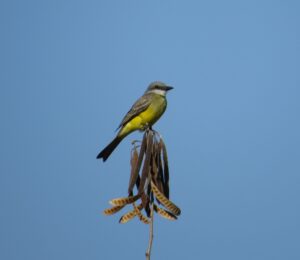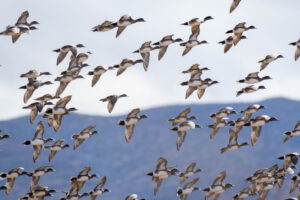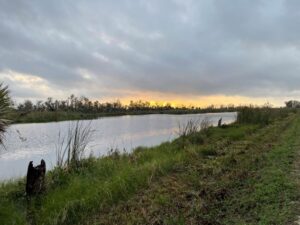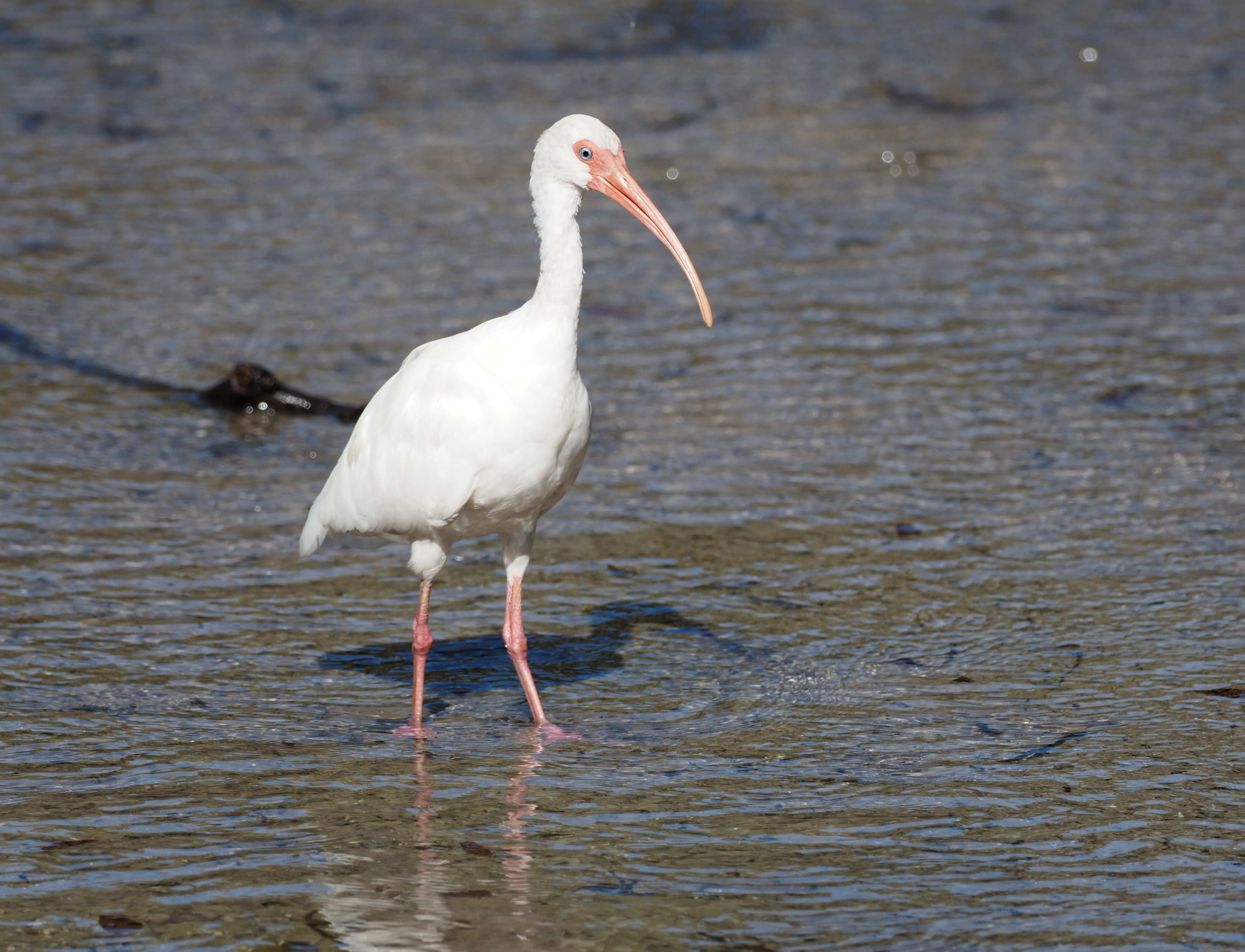
November 13 – 17, 2021
Narrative and Photos by Simon Thompson
This trip to Northern Florida was one of our regular road trips, where we all meet at a given location before the official start of the tour and drive our own vehicles. The weather was beautiful, albeit a little cold first thing in the morning, but this was going to be the theme of the week- just absolutely perfect weather. After all getting together and walking down the road to the local grill we planned our upcoming week and hoped for some good birding.
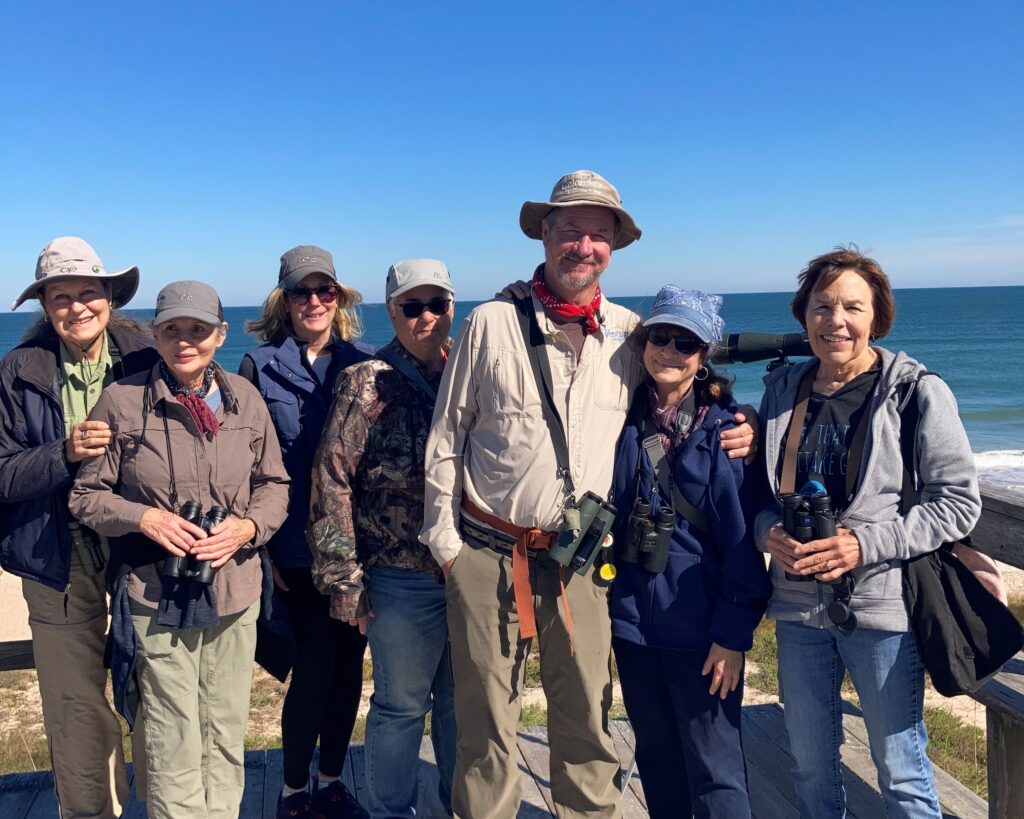
Our group
Our first stop in the morning was the Vilano Beach Boardwalk which was conveniently just off the hotel parking lot.
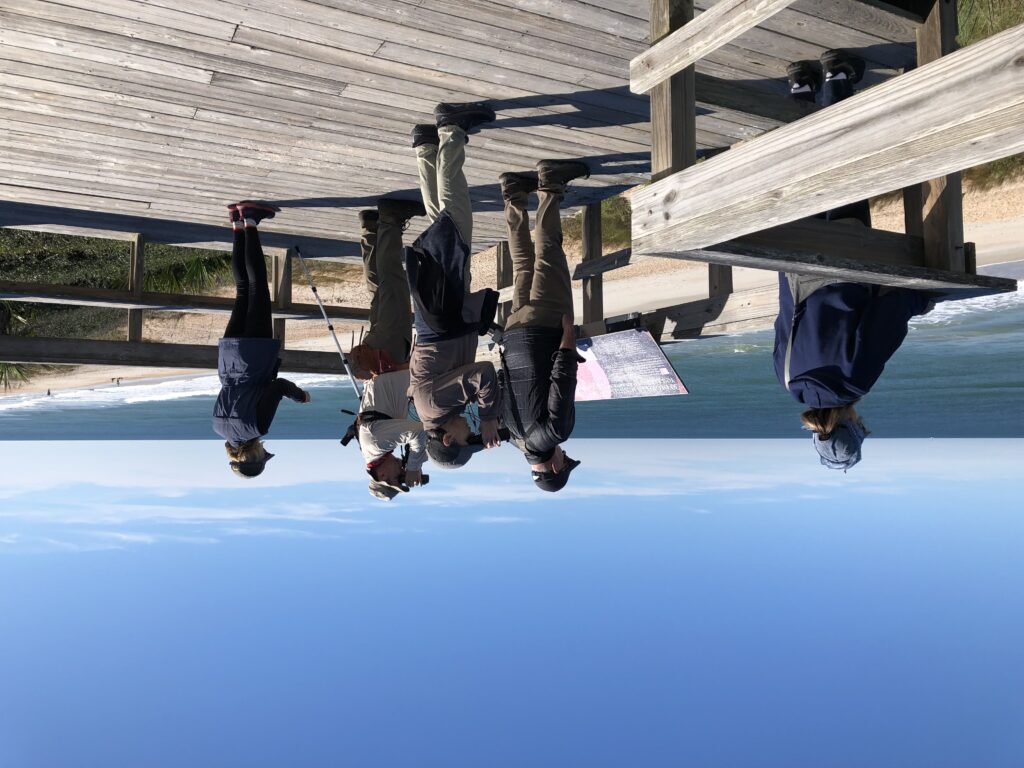
Beach birding
Despite the traffic coming over the nearby bridge, the boardwalk was good for wading birds and Osprey; the latter seemed to be everywhere with many individuals carrying fish.
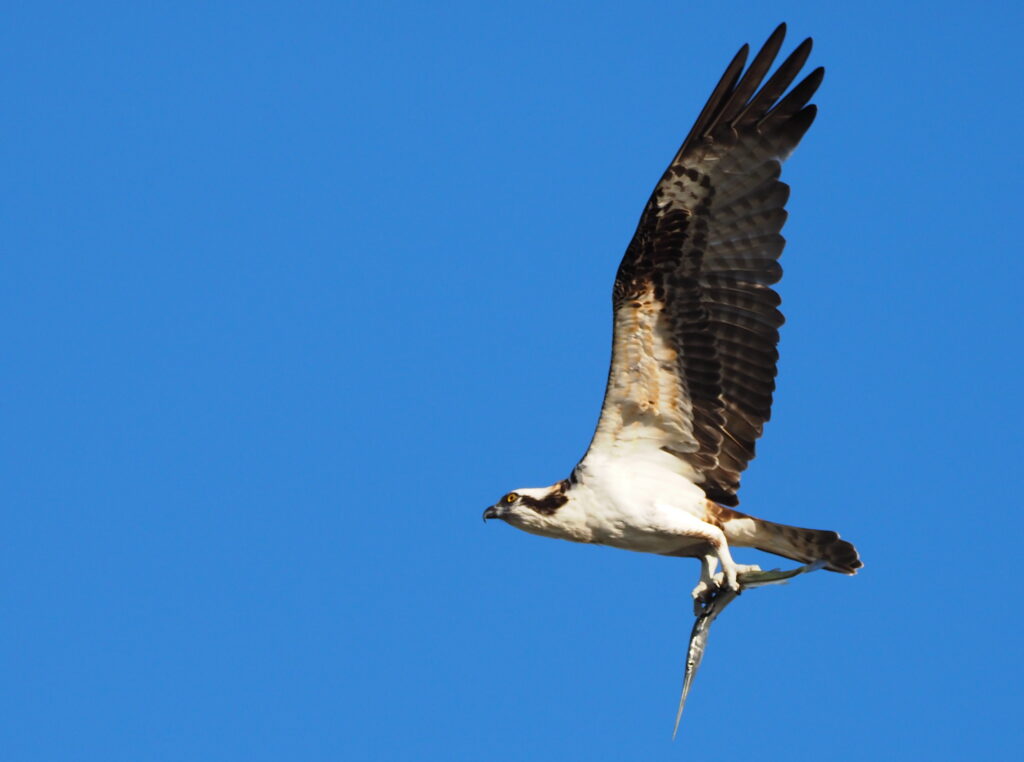
Osprey
Obviously good fishing nearby! The rest of the day would be just up the road at the extensive Guana Tolomato Matanzas National Estuarine Research Reserve (GTM NERR).
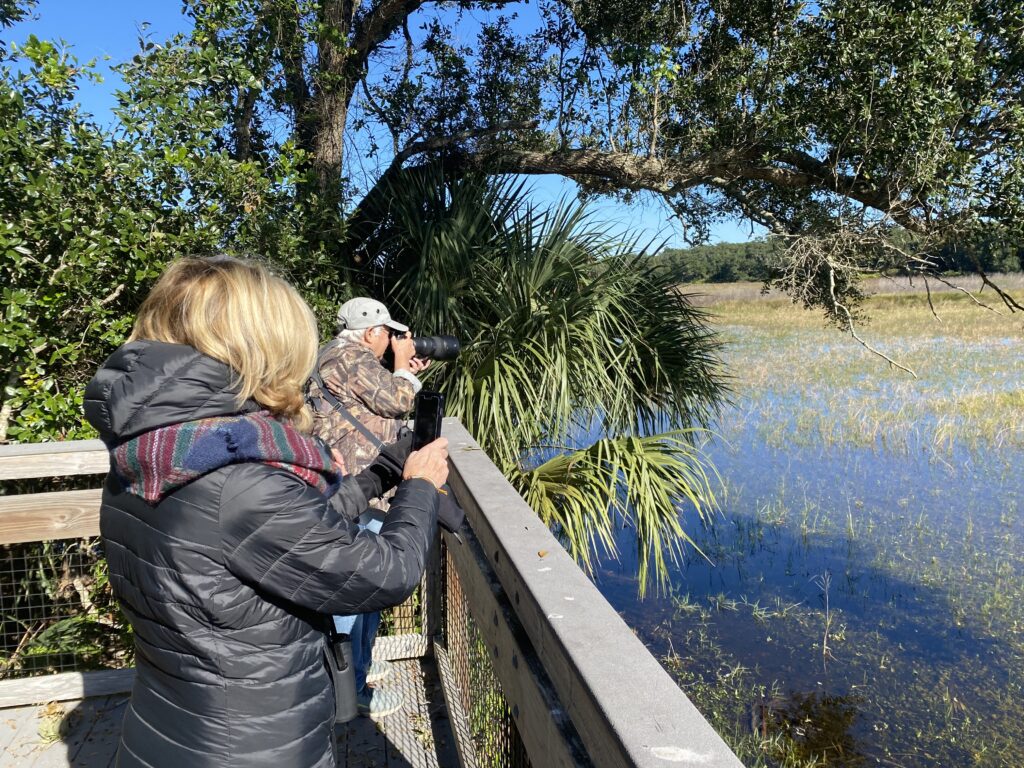
Birding at Guana 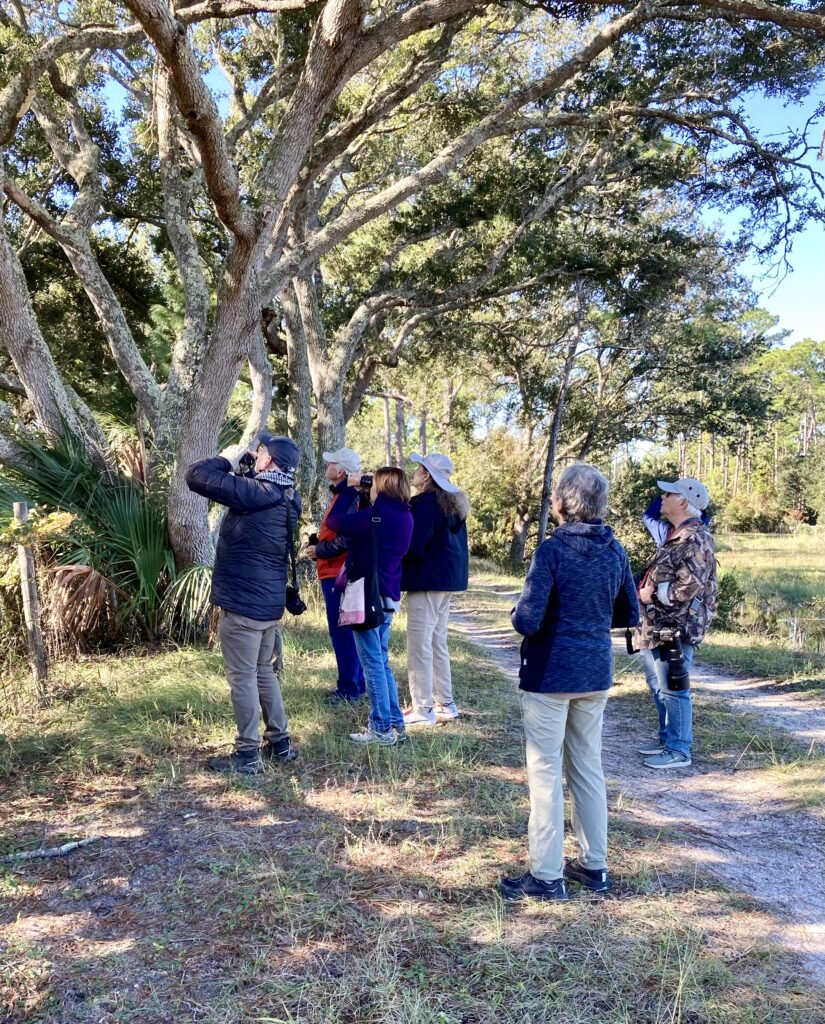
Birding at Guana
Our first stop was the dam area, where folks (and birds) fish near the sluice, but I think the birds may be more effective at catching their dinners. Several Wood Storks were hanging around waiting for hand-outs, as were Ruddy Turnstones and even a few Sanderling.
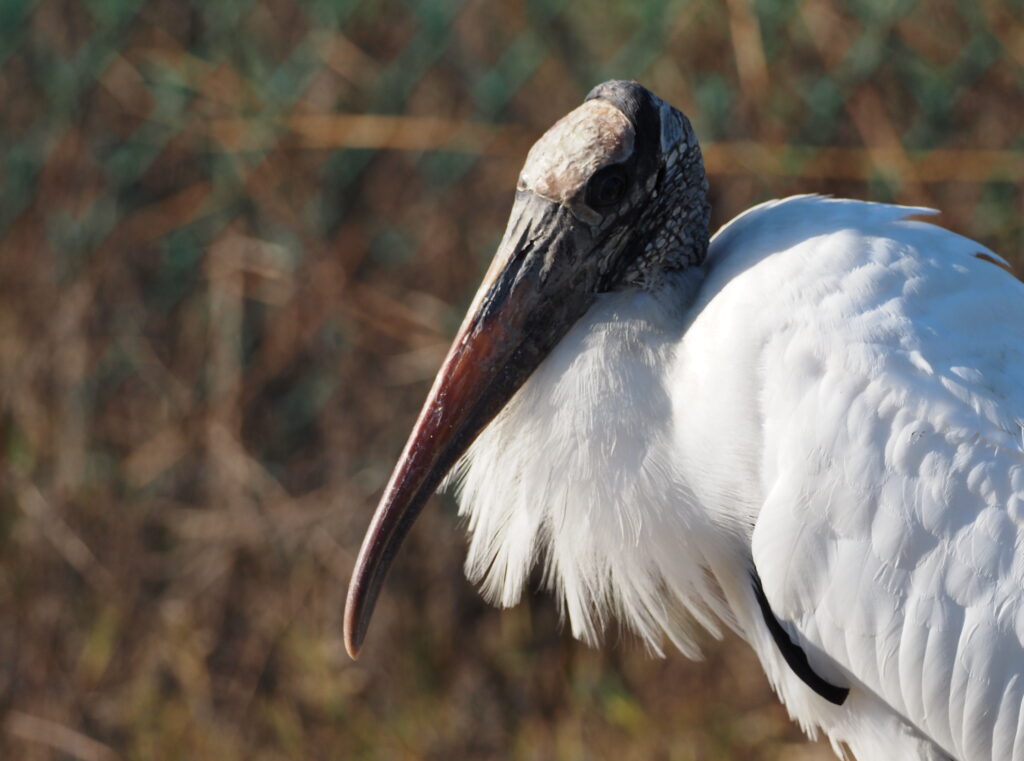
Wood Stork
Early mornings are always the best for seeing small birds (such as warblers!), so a walk through the beautiful maritime forest of oaks, cedars and palmettos was next on our agenda. Unfortunately the woods were fairly quiet, but we did find Yellow-bellied Sapsucker, Yellow-rumped, Black-and-white and most surprisingly of all, an immature Blackpoll Warbler. Thankfully several of us managed to get photos to prove it!

Blackpoll Warbler
We then worked our way north stopping and birding along the coast and lagoon. Large numbers of Tree Swallows were moving south maybe ahead of bad weather to the north of us, otherwise it was the normal species on the beach- Brown Pelican, Northern Gannet, Sanderling and Royal Terns.
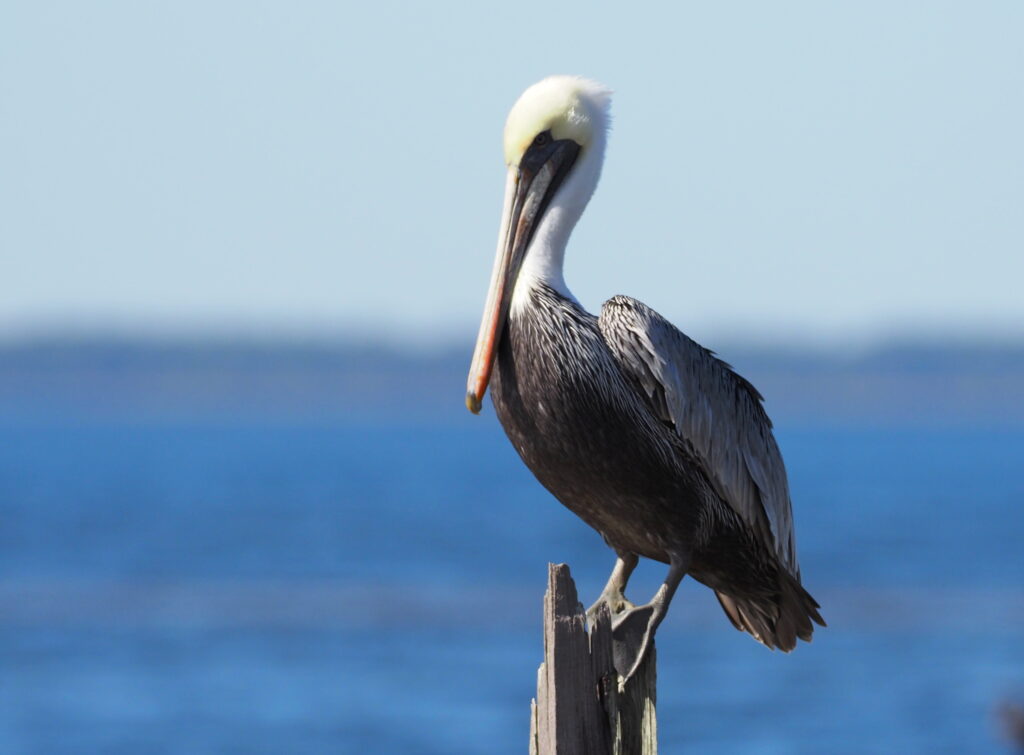
Brown Pelican
After a brief stop at the Mickler Boardwalk (complete with Anhingas drying their wings) we spent the remainder of the afternoon at Fort Mose State Park.
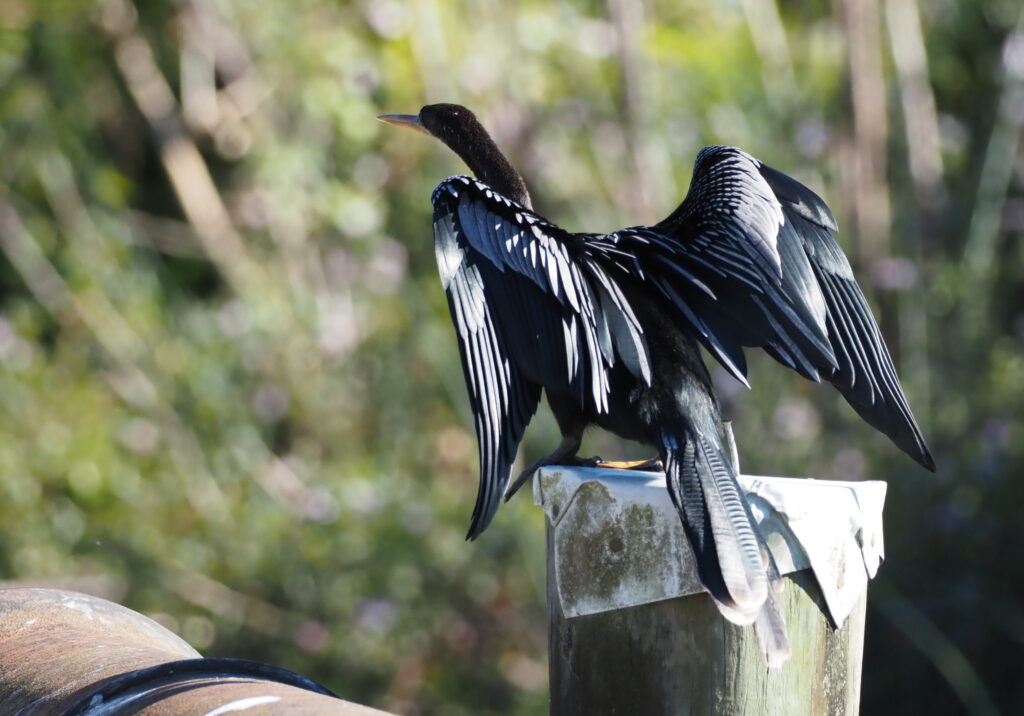
Anhinga
This fascinating park was the site of the first free slave settlement in the area, although most of the original site is now buried under the marshes.
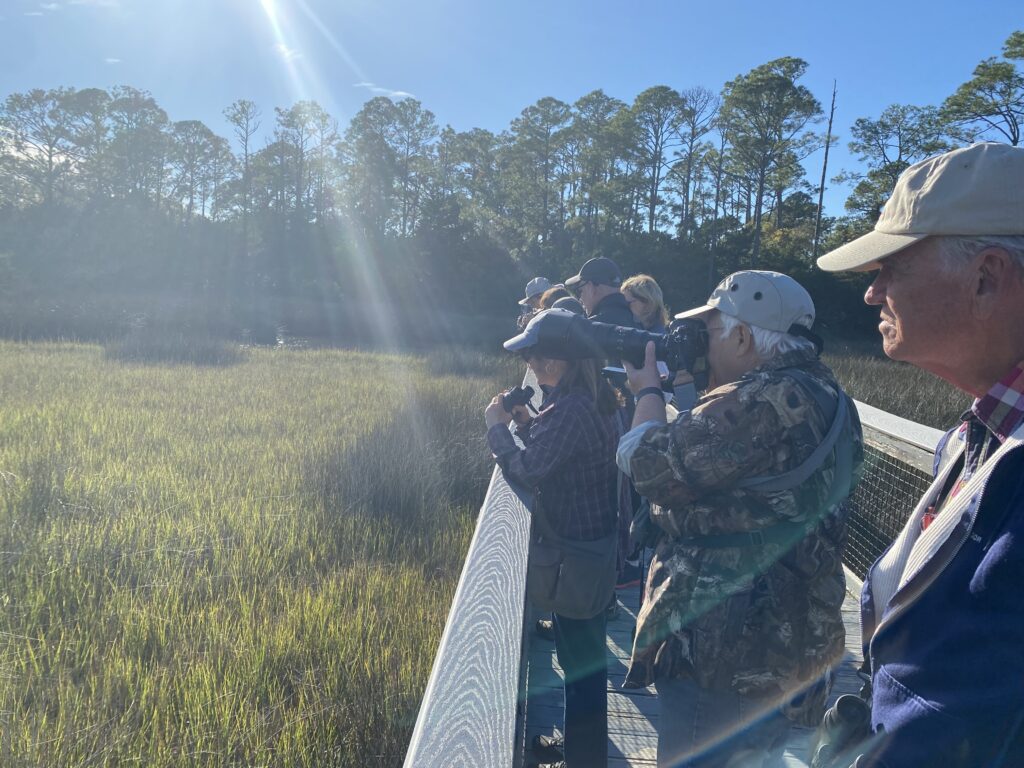
Birding at Fort Mose State Park
We started the next day with a casual walk around Castillo de San Marcos. We didn’t go into the fort, but birded and explored the exterior. Built in the late 1600’s, this masonry fort is one of the oldest in the country.

Castillo de San Marcos 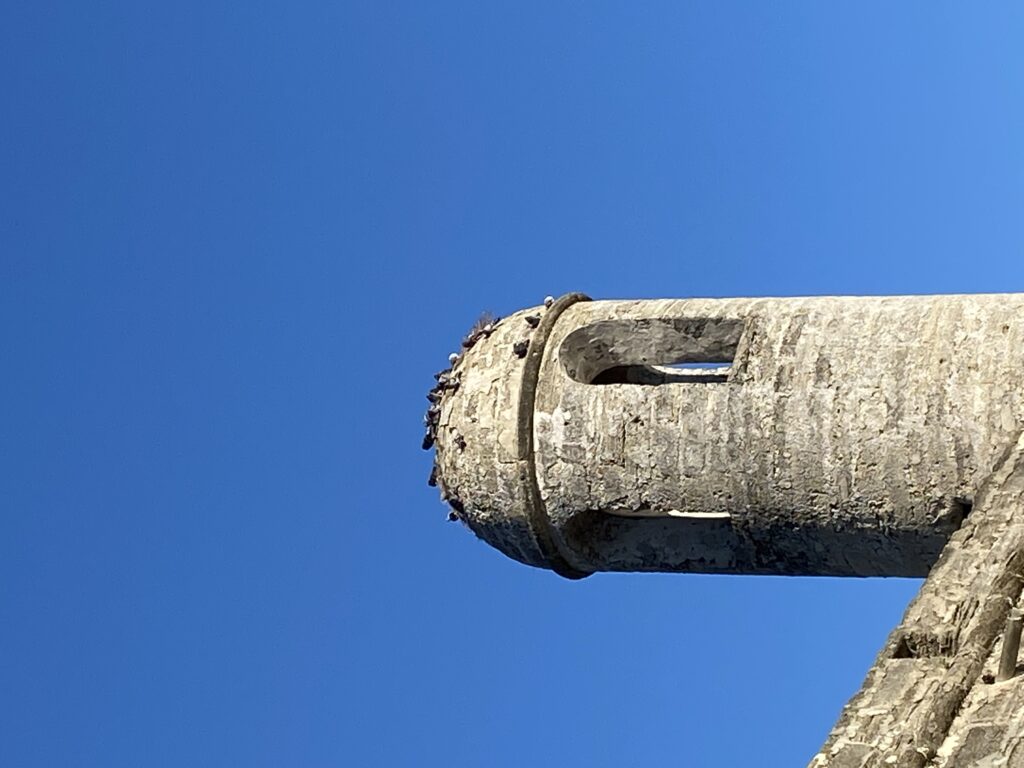
Castillo de San Marcos
The wintering shorebirds were quite obliging at our next stop, the St Augustine Lighthouse boat ramp- with Black-bellied and Semipalmated Plovers very close to us, along with Western and Spotted Sandpiper, Dunlin and several Ruddy Turnstone.
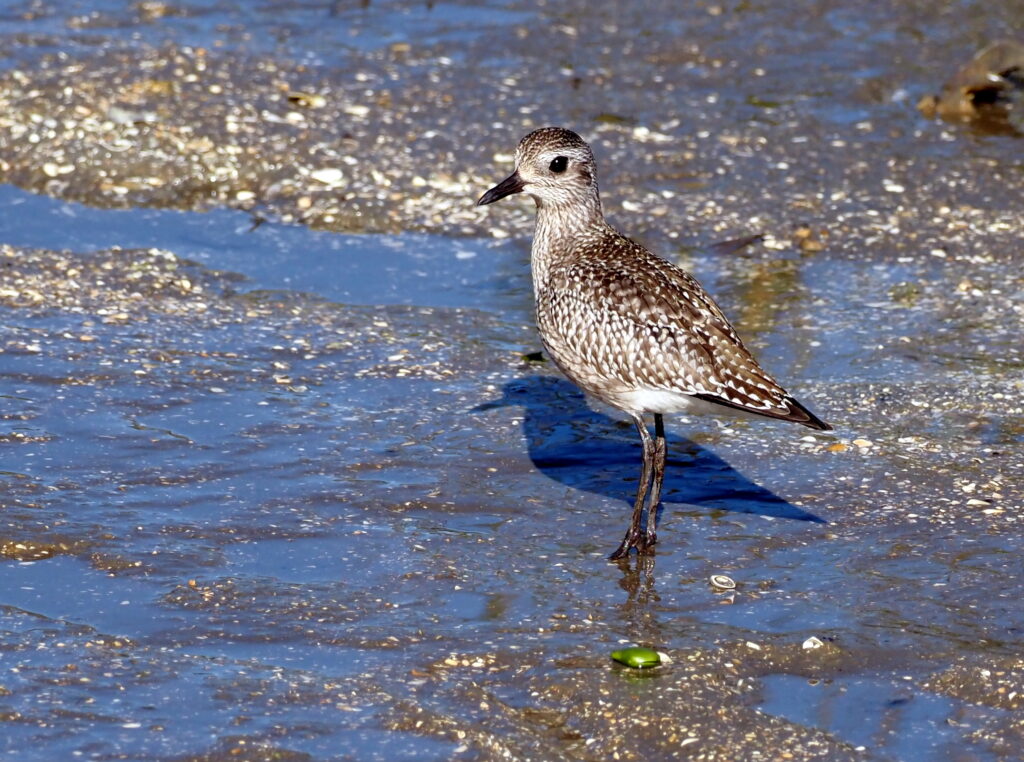
Black-bellied Plover
After lunch in the local park where we were watched by an ever-advancing band of hungry Gray Squirrels, the remainder of the morning was spent at the St. Augustine Alligator Farm. With a name like that, I wasn’t sure what to expect and it was a real surprise and pleasure when I discovered that this was actually a conservation-inspired facility that was captive-breeding all of the world’s crocodilians. Some of these reptiles were critically endangered in their home ranges, so this “Alligator Farm” may be a lifeline for several species.
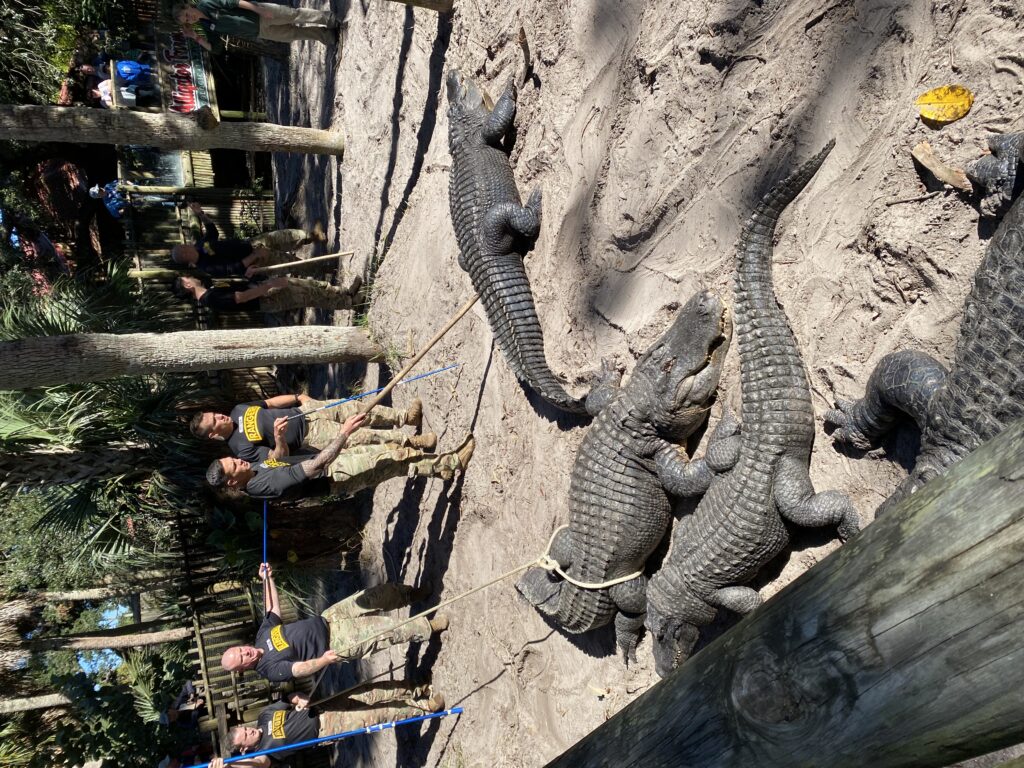
St. Augustine Alligator Farm 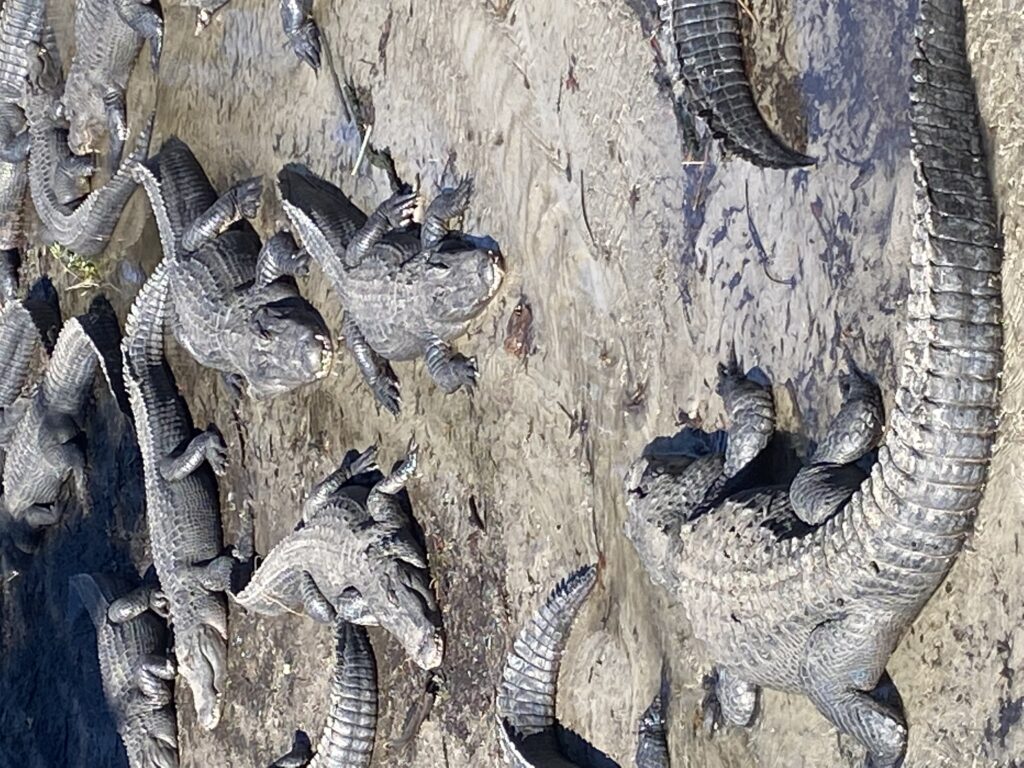
St. Augustine Alligator Farm
Some of the enclosures (full of American Alligators) were also full of large wading birds- hopefully not about to become someone’s dinner, and we had excellent views of Roseate Spoonbill, White Ibis, Yellow-crowned and Black-crowned Night-Herons, Tricolored and Little Blue Herons.

Black-crowned Night Heron
A brief stop at Hayling Freedom Park produced some typical marsh species, but the marsh sparrows proved elusive. I thought early morning would be best so we decided to try again. Dinner tonight was at a seafood restaurant out of town and very convenient to the Vilano Boat Ramp- so a late afternoon stop was on the cards. It was getting to dark for many birds, but the Clapper Rails were very vocal and a Merlin made a foray across the marshes maybe hoping for a late meal.
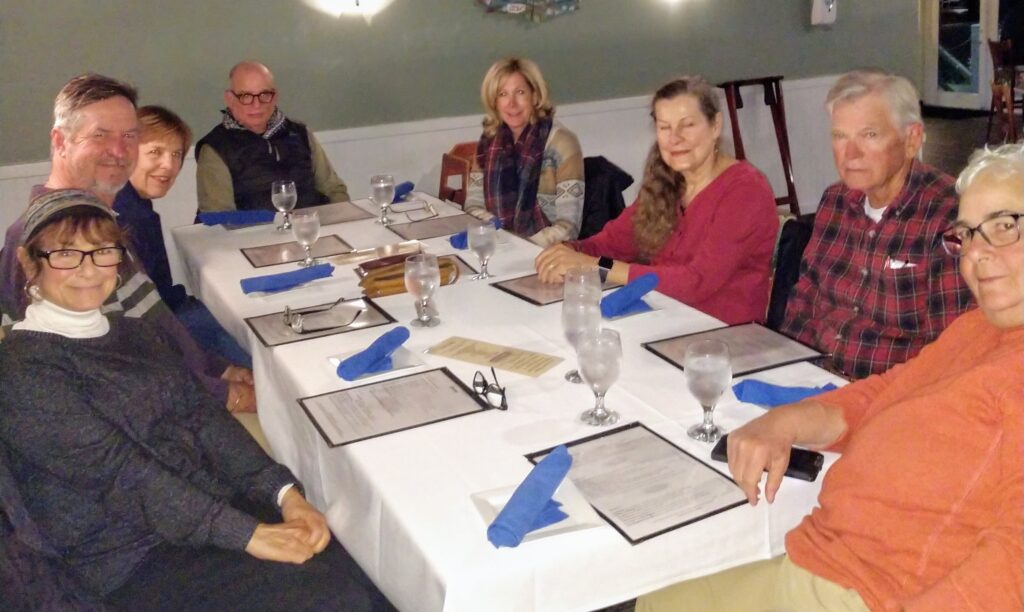
Group dinner
The next morning we paid another visit to Hayling Freedom Park with great views of Seaside Sparrows and found our second Blackpoll Warbler of the trip, as well as at least 2 Barn Swallows mixed in with the Tree Swallow flock. These Blackpoll Warblers have either decided to spend the winter in Florida or they are very late heading south.
A walk along the beautiful white sandy beaches at Anastasia State Park before lunch produced a couple of Wilson’s Plovers amongst the more abundant Semipalmated Plovers and it was good to be able to study them closely and see the differences.
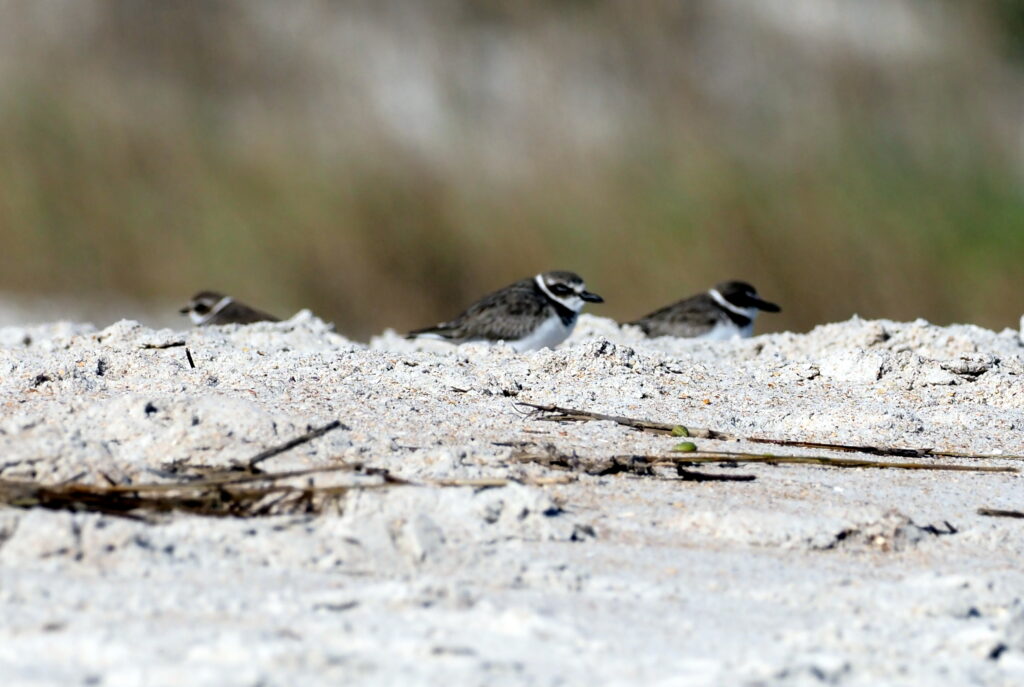
Wilson’s Plovers
Lunch was under the live oaks, where we hoped for some wintering migrants. Unfortunately it was rather quiet so we headed into St Augustine for an afternoon off to enjoy a walking tour of the older neighborhoods. Once we escaped from the really tourist-infested area along St George’s St, we were virtually alone to enjoy the quiet streets and 18th Century buildings where we had a lucky encounter with one of the local city tour guides helped us to understand more about the history of the area.
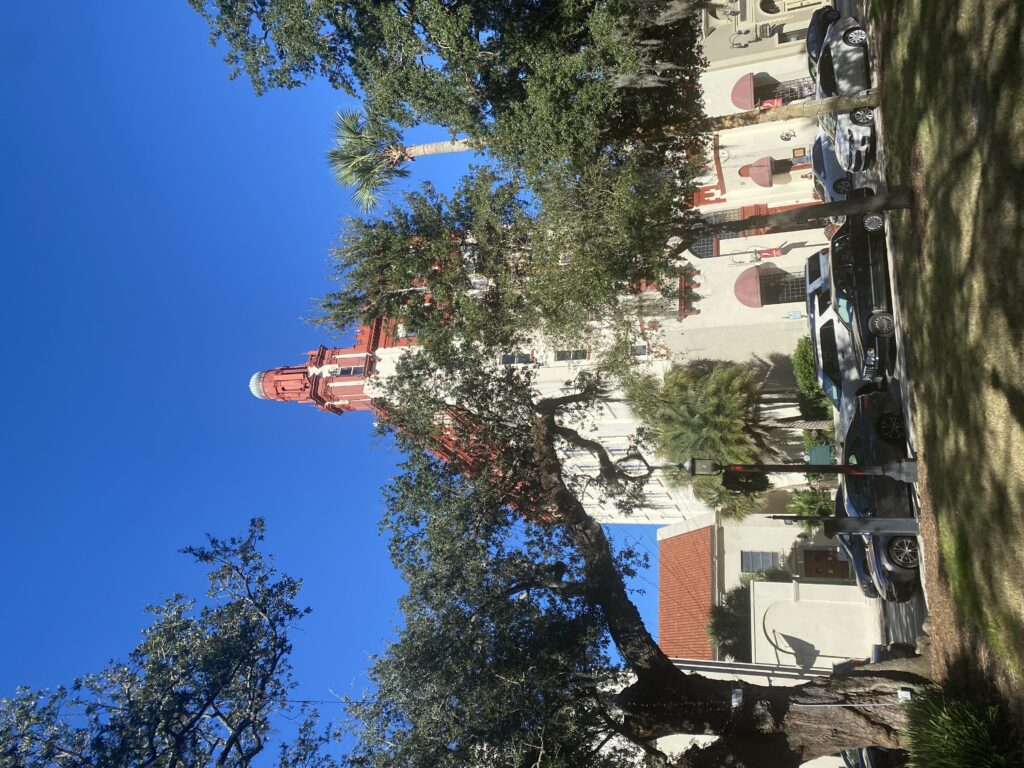
St. Augustine 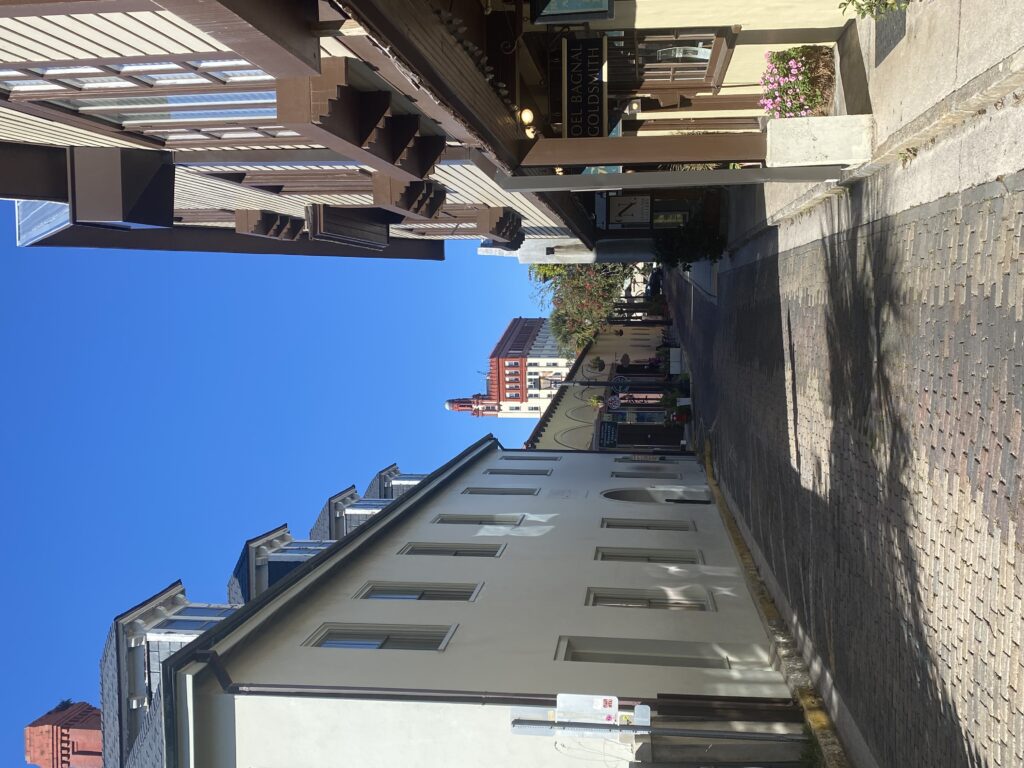
St. Augustine
We did another beach walk our last morning. The white sands of Fort Matanzas State Park were gorgeous and a walk produced more Wilson’s Plovers and a very energetic Reddish Egret which dashed around in the surf.
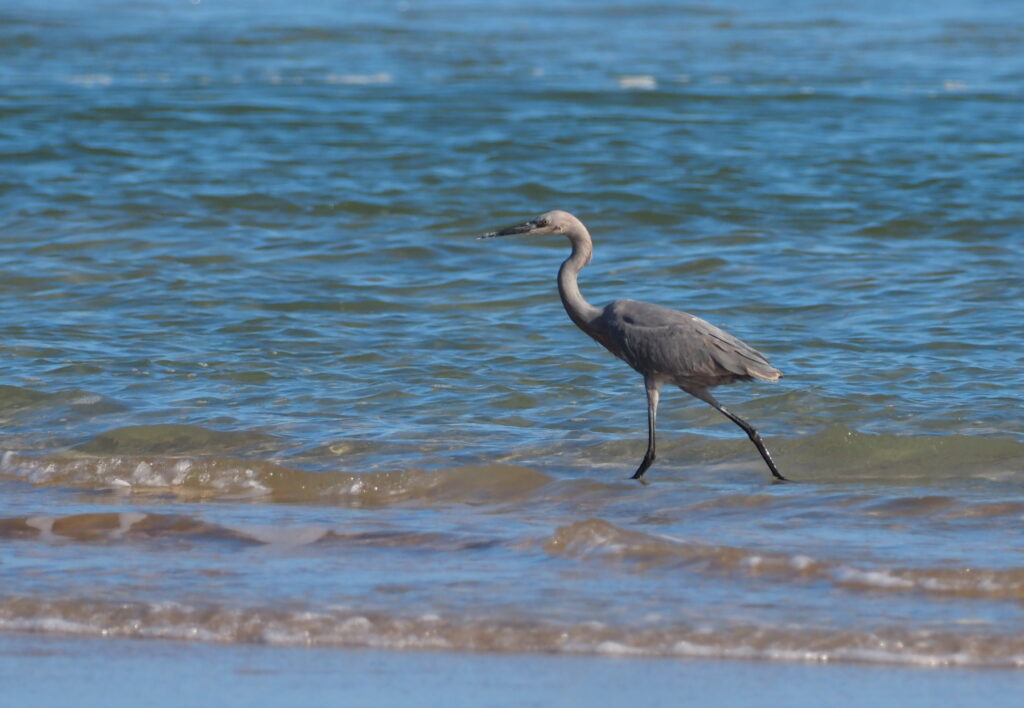
Reddish Egret
Several of the group had decided that it was time to head home, so only a few of us walked the boardwalks at Fort Matanzas. Unfortunately they were very quiet with only a few Blue-gray Gnatcatchers, Black-and-white Warblers and a couple of Gray Catbirds.
We finished the trip with 101 species.
More birds…

White Ibis 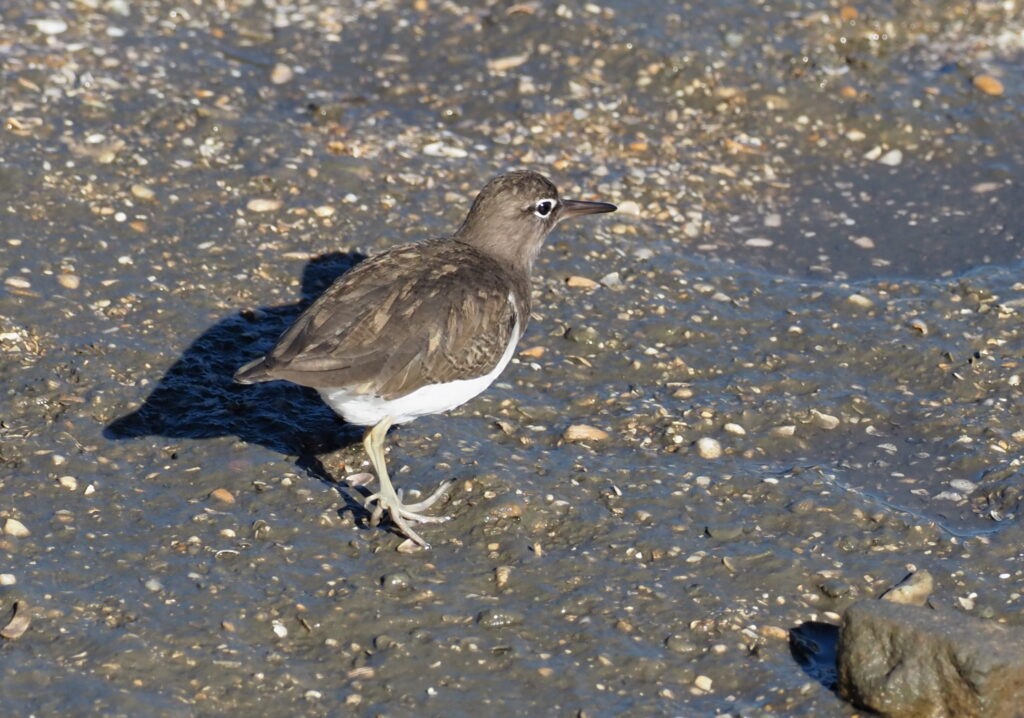
Spotted Sandpiper 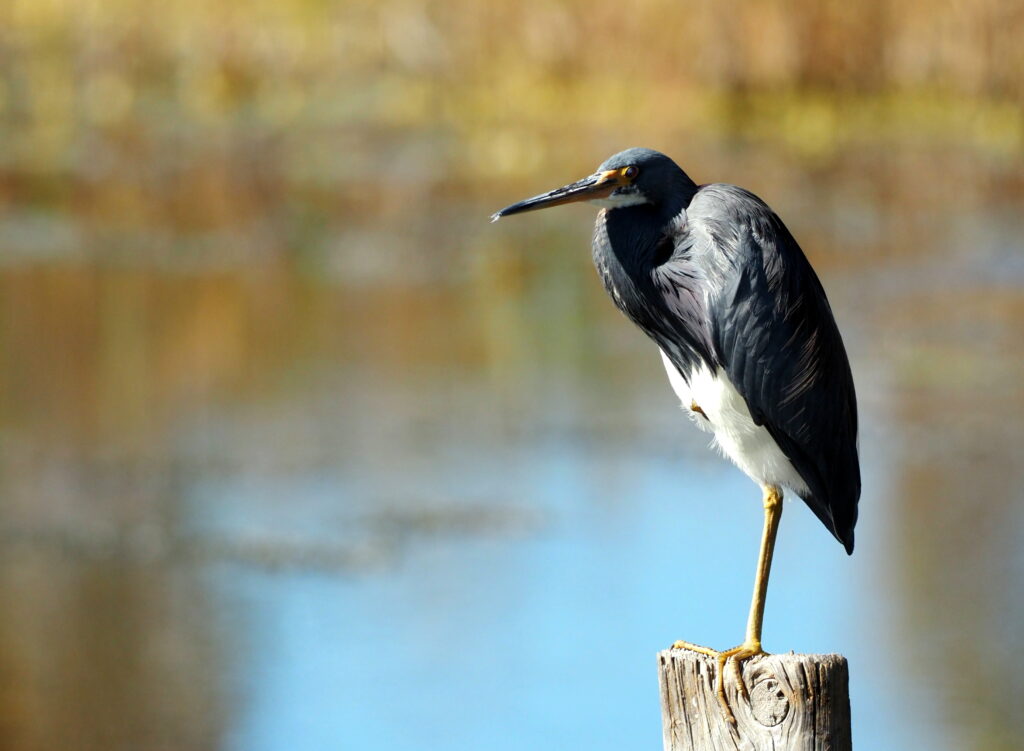
Tricolored Heron 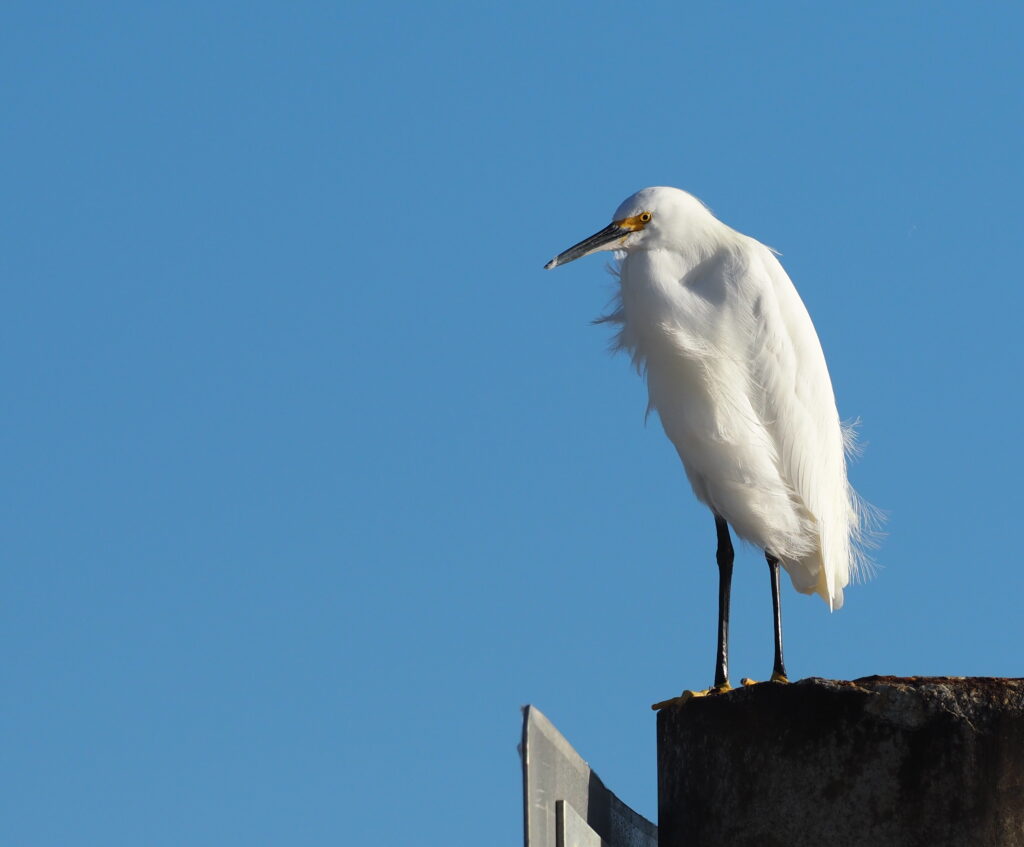
Snowy Egret 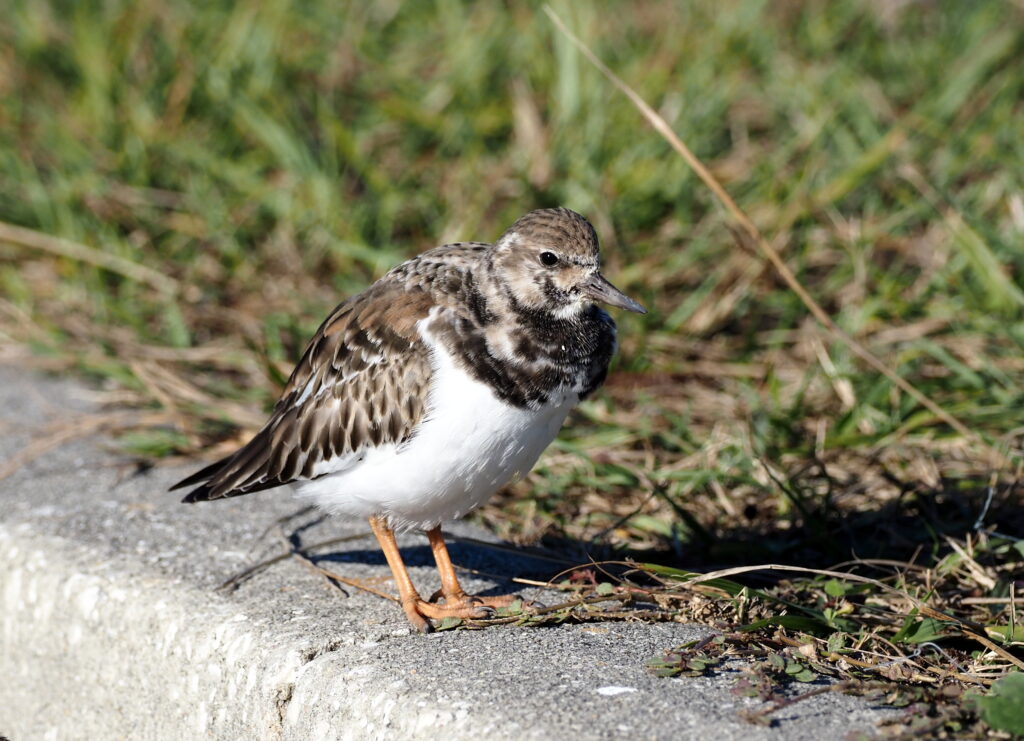
Ruddy Turnstone 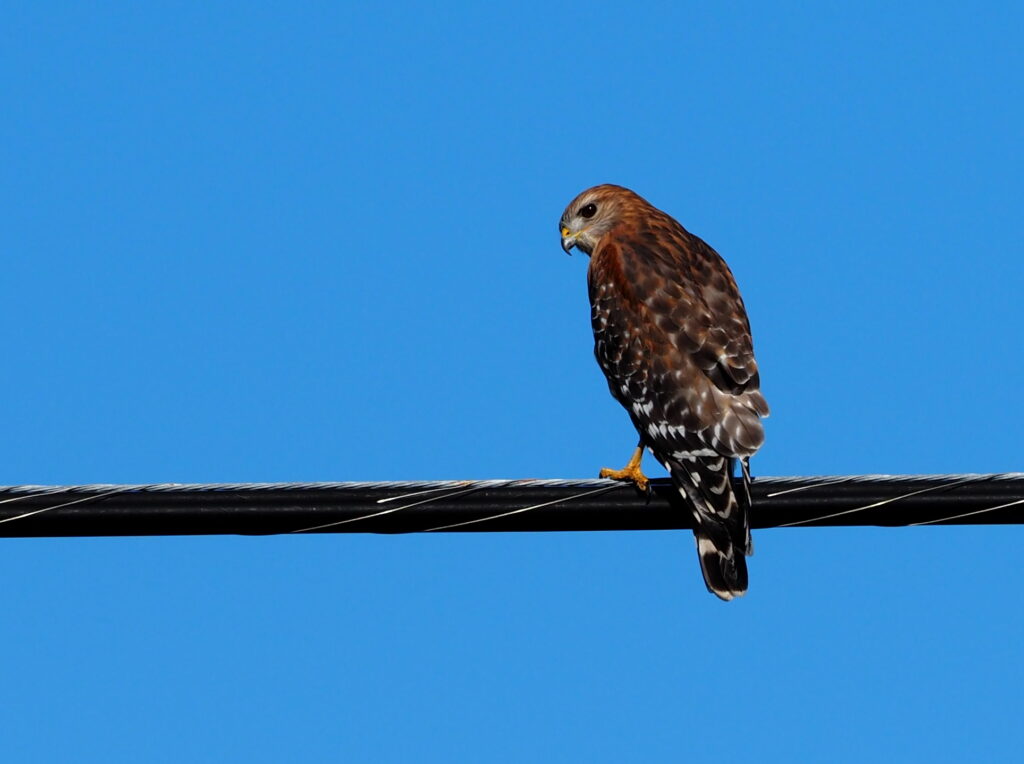
Red-shouldered Hawk 
Semipalmated Plover 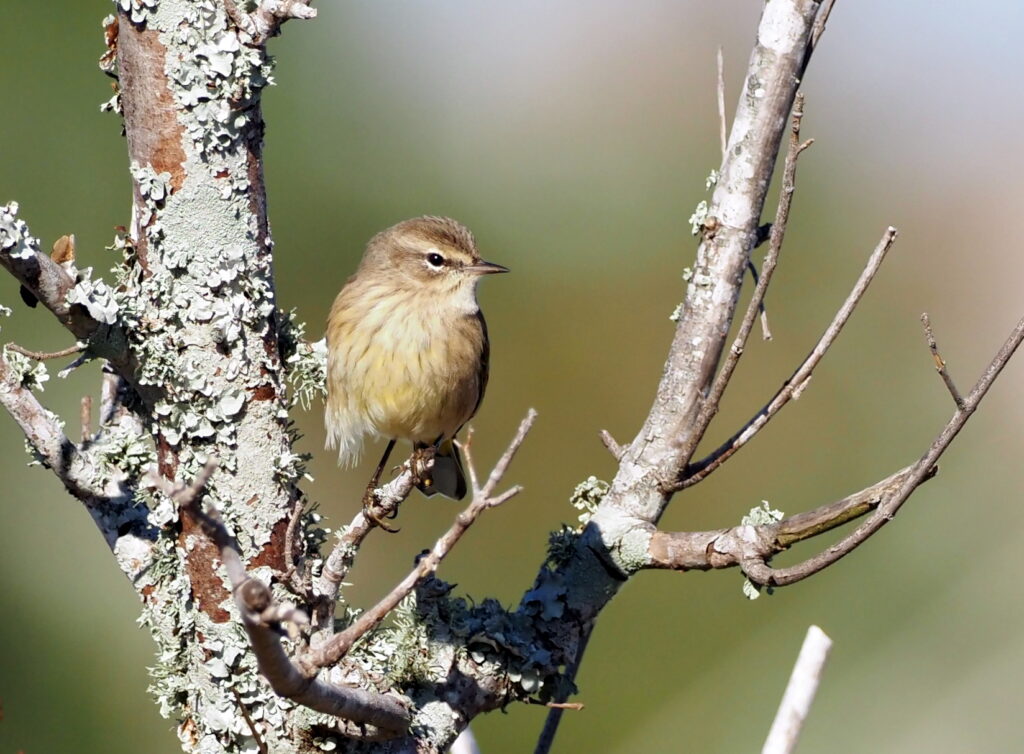
Palm Warbler 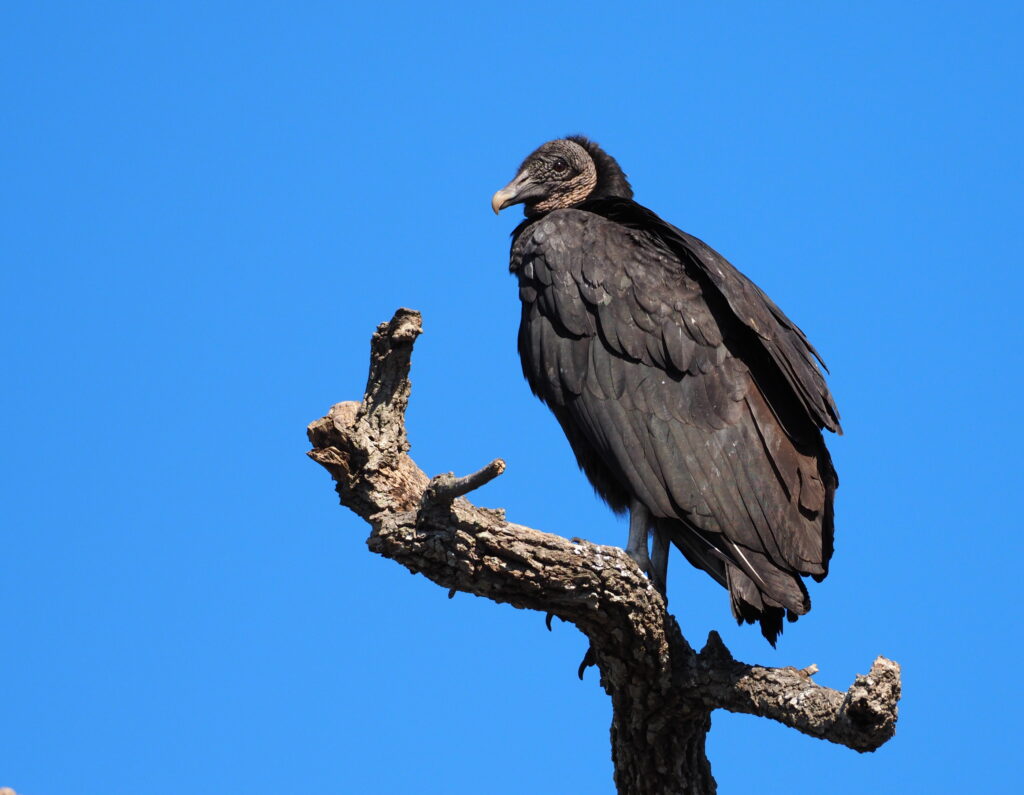
Black Vulture 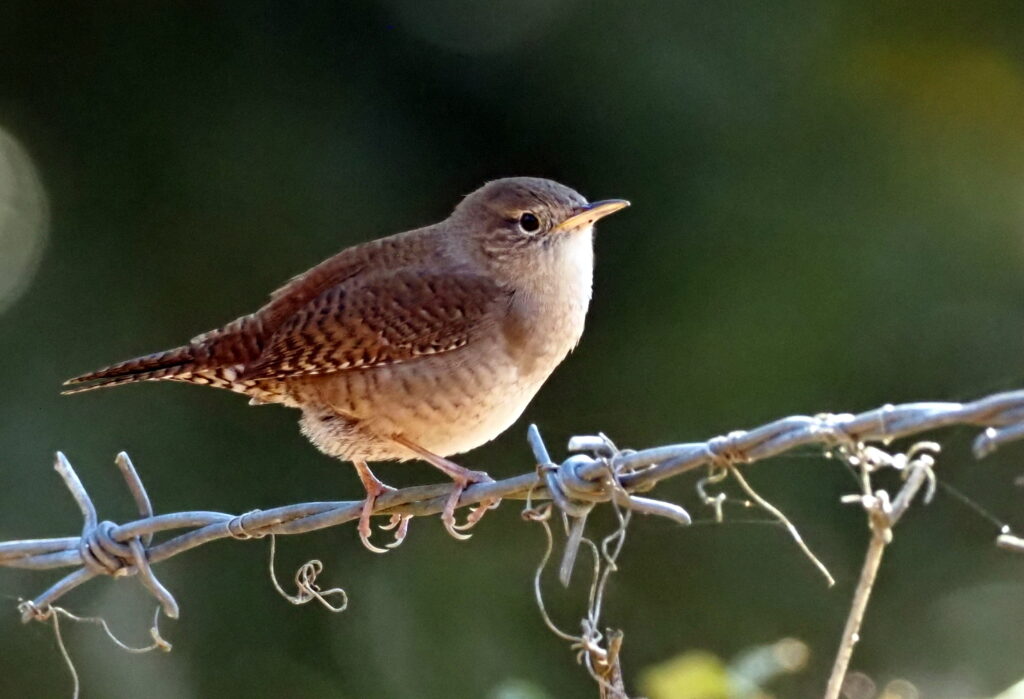
House Wren 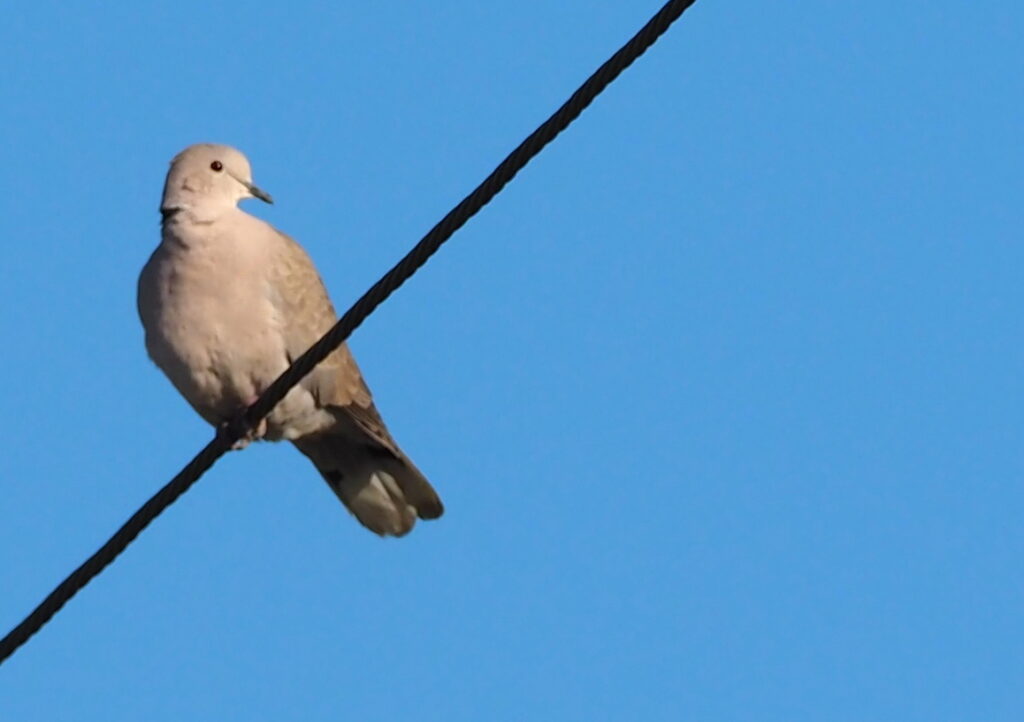
Eurasian Collared-Dove 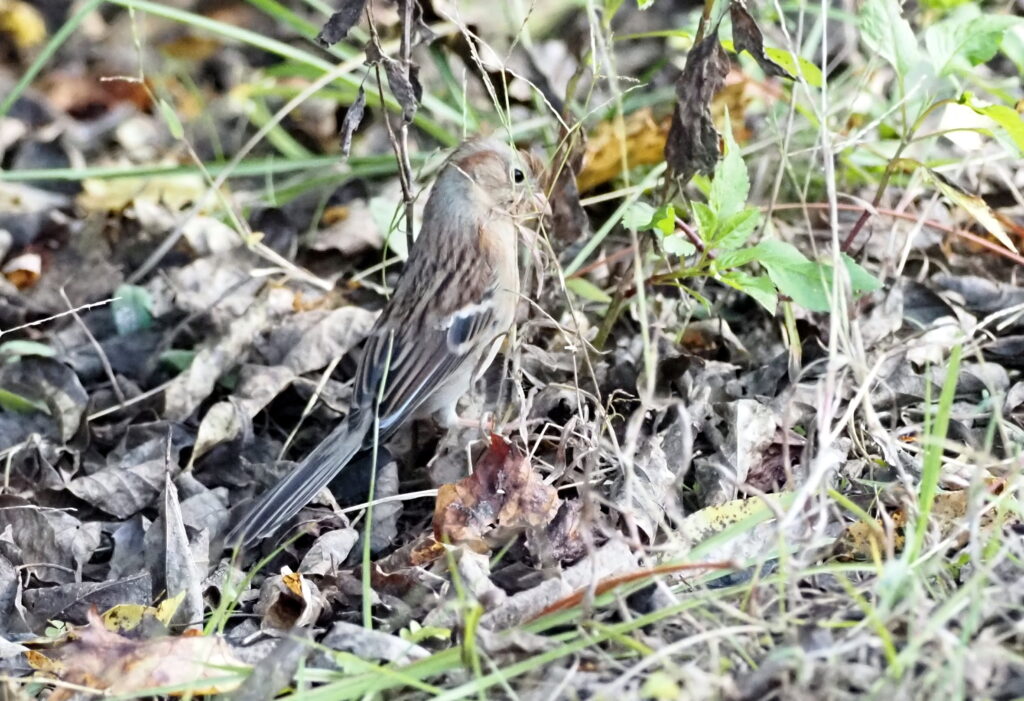
Field Sparrow 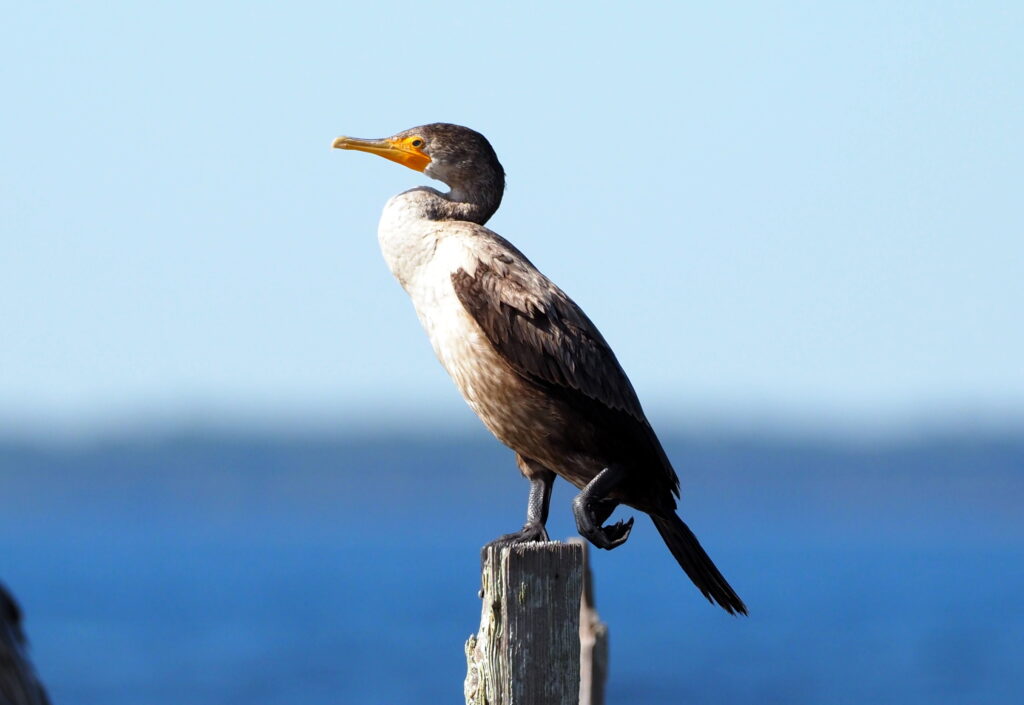
Double-crested Cormorant 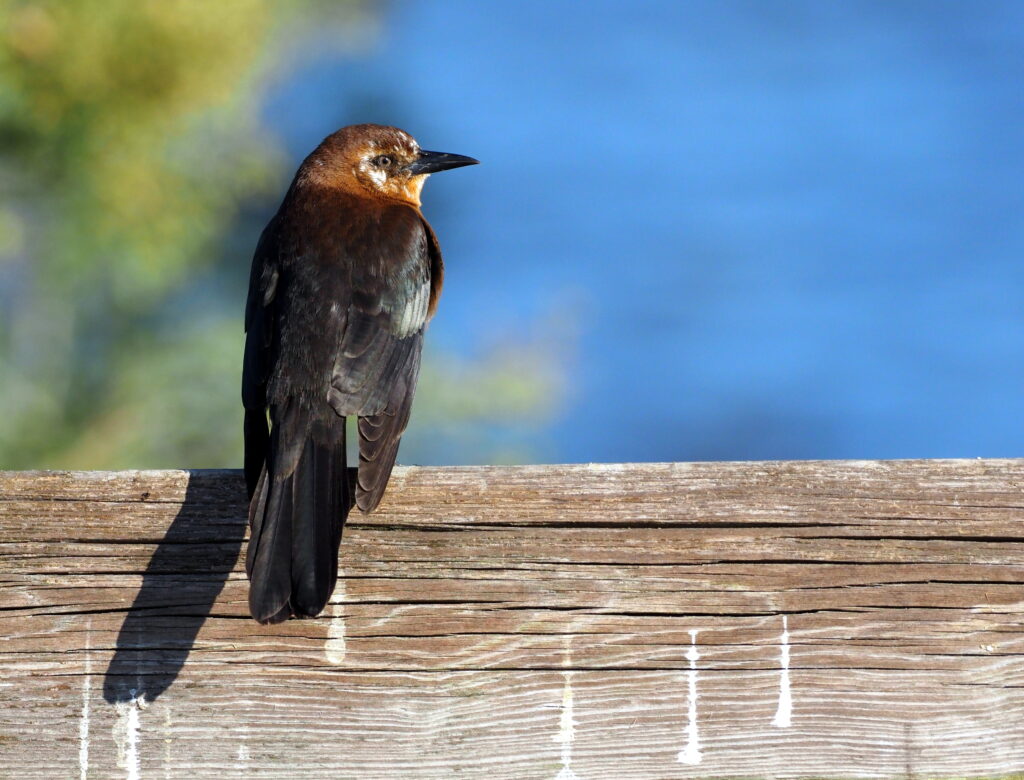
Boat-tailed Grackle 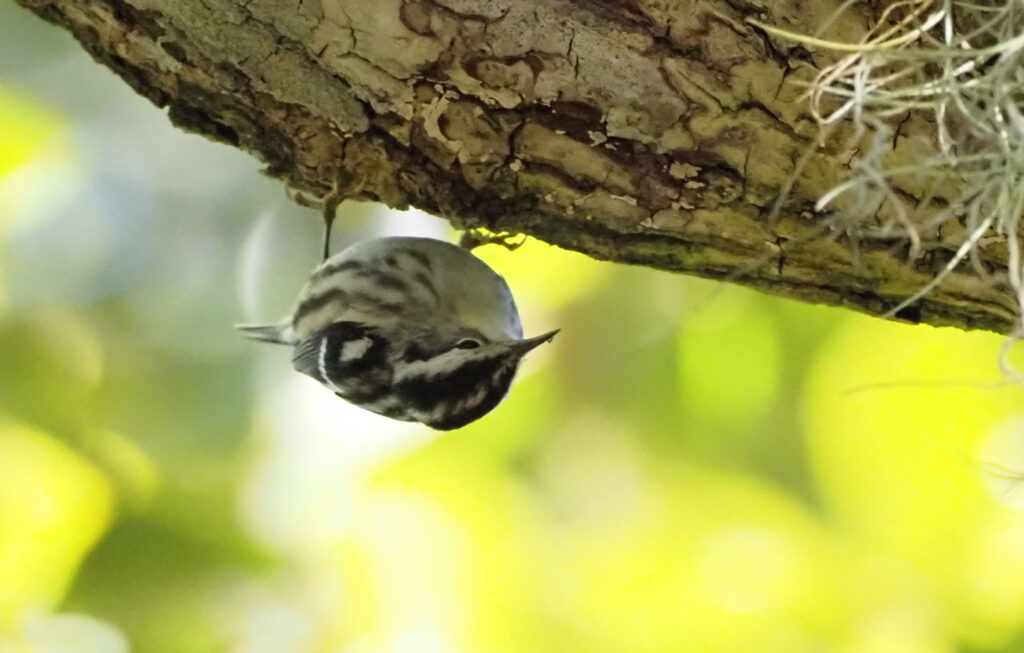
Black-and-white Warbler 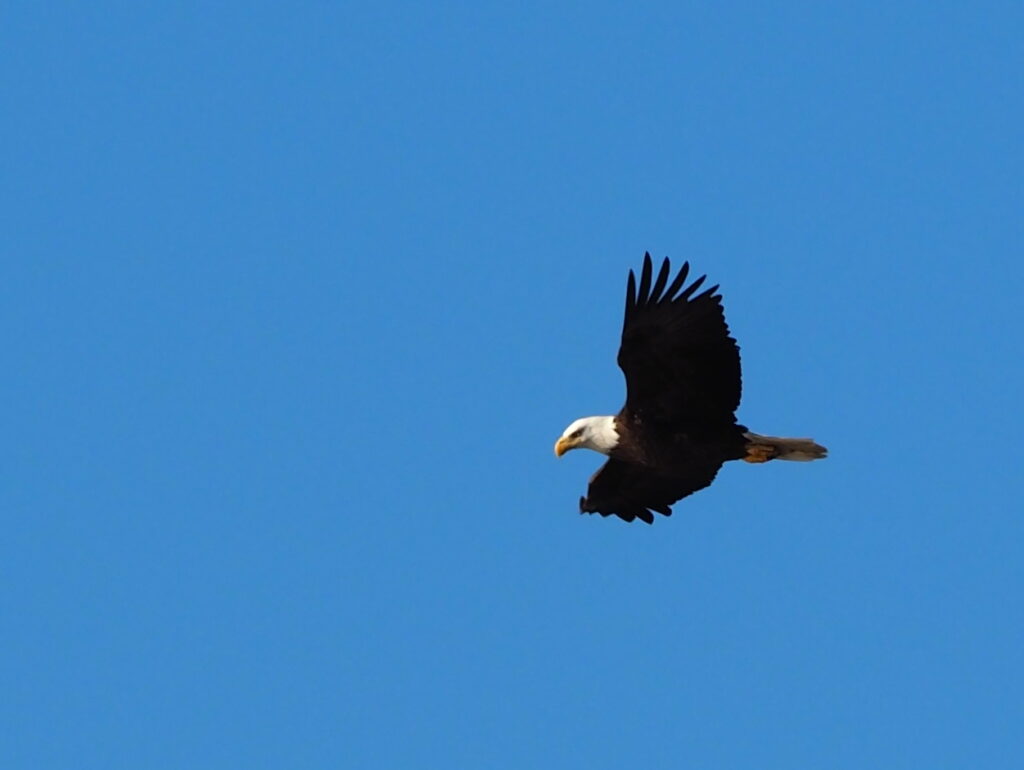
Bald Eagle 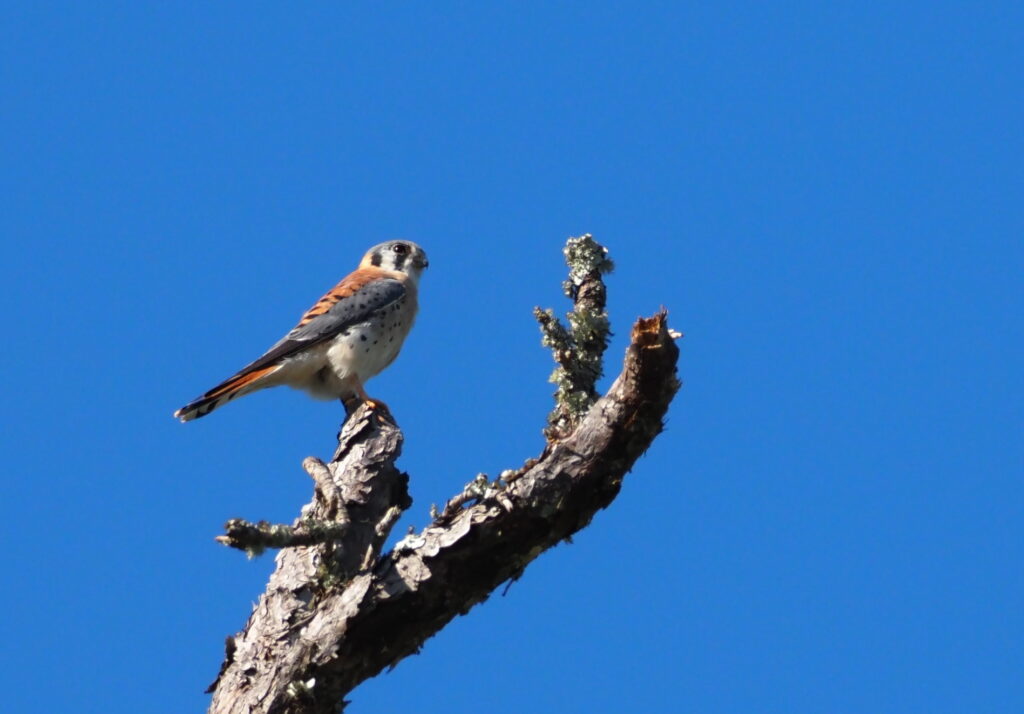
American Kestrel 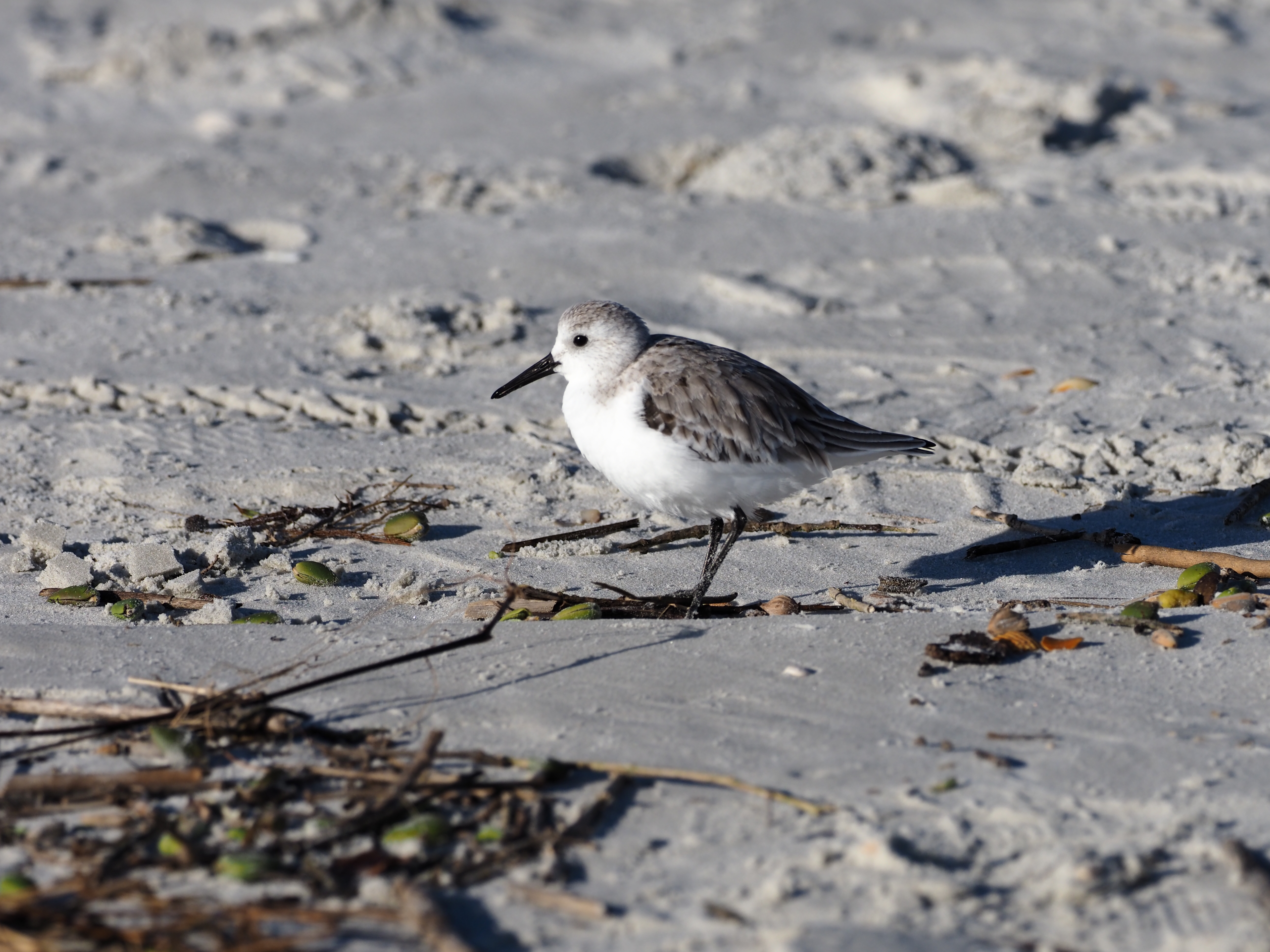
Sanderling
